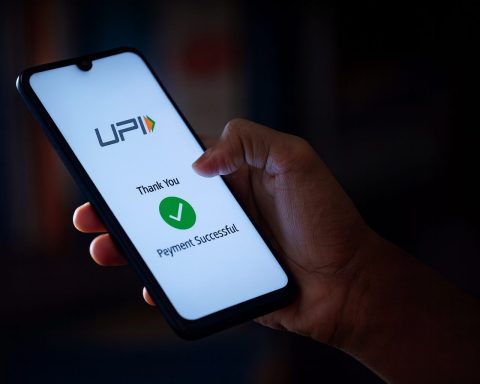- In late June 2025 MuleSoft announced AI agent orchestration in Anypoint Platform, adding Model Context Protocol (MCP) and Agent-to-Agent (A2A) support, an MCP Connector to expose APIs as MCP endpoints, Flex Gateway upgrades for secure MCP/A2A connectivity, and Anypoint Code Builder AI tooling.
- Google Cloud Apigee’s Gemini Code Assist reached general availability on June 18, 2025, integrating Gemini LLMs with Apigee’s API hub to generate OpenAPI specs via chat, provide AI-generated spec summaries, and support iterative refinement while enforcing enterprise security standards.
- Postman unveiled Agent Mode at POST/CON 2025 (June 3–4, 2025), an AI-native assistant that executes design, testing, documentation, and monitoring tasks, adds MCP support and the world’s first MCP Server Network, and serves over 40 million developers in 500K organizations including 98% of the Fortune 500.
- Kong rolled out AI Gateway and AI Manager in May 2025, added HashiCorp Vault integration for LLM credentials on June 26, 2025, introduced Konnect Service Catalog and a revamped Dev Portal on July 1, 2025, and released Kong Mesh 2.11 with reduced privilege modes on June 20, 2025.
- WSO2 marked its 20th anniversary in 2025 by launching Bijira, an AI-native cloud SaaS API management platform, in May–June 2025, adding AI Governance and an AI Gateway with multi-LLM support to API Manager 5.0, previewing an AI-powered API Design Assistant via Copilot, debuting Devant AI-driven integration PaaS on Azure Marketplace, and completing the Moesif acquisition in June 2025.
- SnapLogic released AgentCreator 3.0 in April 2025 with a Prompt Composer and Agent Visualizer plus 1,000+ pre-built connectors and its own API Management solution, and by June 2025 added an LLM Selector to compare Bedrock, OpenAI, Azure, and Google Gemini outputs, along with improved prompt editing and multi-environment deployment via AutoSync.
- Gravitee raised $60 million in a May 20, 2025 Series C led by Sixth Street Growth, bringing total raised to $125 million, and positions itself as an “Agentic API and Event Management” leader after being named a Gartner 2024 Magic Quadrant Leader for Full Life Cycle API Management, with customers including Michelin and Roche.
- 42Crunch raised a $17 million Series A in July 2025 led by Energy Impact Partners to scale API vulnerability scanning and threat protection, amid findings that 95% of organizations experienced API security issues in the past year.
- Market momentum includes Postman serving over 40 million developers, MuleSoft’s Anypoint Platform handling over 1 trillion transactions per month, Boomi’s acquisition of Thru on May 15, 2025, Jitterbit expanding its partner program on June 25, 2025, and surveys showing 84% of IT leaders trust AI agents for certain tasks and 90% expect meaningful AI outcomes within 12–18 months, with integration software growth forecast around 20% in 2025.
- Industry forecasts indicate the API management market reaching roughly $15–20 billion by 2027 with multi-cloud, multi-format integration (AsyncAPI, MCP, GraphQL) becoming standard, while Gartner cautions that by 2027 more than 40% of agentic AI projects may be canceled due to cost and ROI concerns.
The API management and integration landscape saw major developments in June and July 2025, driven largely by the AI wave and a push for smarter automation. Leading vendors rolled out AI-powered features that blend large language models (LLMs) and integration tooling, while the market also witnessed notable acquisitions and funding in the API economy. Industry analysts are highlighting emerging trends – from AI-driven orchestration to heightened API security – that are reshaping strategies. This report provides a comprehensive roundup of product launches, strategic moves, trend forecasts, expert insights, and market adoption metrics in the API management and integration platform space during this period.
Product Launches and Technical Innovations
MuleSoft (Salesforce): In late June, MuleSoft introduced new AI agent orchestration capabilities within its Anypoint Platform [1]. These include support for emerging agent communication protocols like the Model Context Protocol (MCP) and Agent-to-Agent (A2A), enabling organizations to make any integration or API “agent-ready” for generative AI workflows [2] [3]. For example, MuleSoft’s new MCP Connector can turn existing APIs into MCP-accessible endpoints, while updates to its Flex Gateway add secure MCP and A2A connectivity for multi-agent systems [4] [5]. MuleSoft also embedded generative AI tools into its IDE, Anypoint Code Builder, for tasks like natural-language API specification generation and automated DataWeave code suggestions [6] [7]. According to MuleSoft GM Andrew Comstock, this “marks the next evolution in enterprise integration,” unifying APIs, AI agent actions, and governance into multi-agent workflows [8]. These innovations align with Salesforce’s launch of “Agentforce” and position MuleSoft to help enterprises securely connect AI-driven agents with enterprise systems at scale [9] [10].
Google Cloud Apigee: Google’s Apigee API Management platform similarly embraced generative AI to accelerate API development. On June 18, Apigee’s Gemini Code Assist feature reached general availability [11] [12]. This tool integrates Google’s Gemini LLMs with Apigee’s API hub to help engineers generate API specifications via chat and natural language prompts [13]. Key capabilities now GA include a conversational interface to design or update OpenAPI specs (“@Apigee” chat prompts), AI-generated spec summaries for quick understanding, and iterative refinement through chat [14] [15]. The AI assistant leverages an enterprise’s established patterns and security schemas to ensure any generated APIs conform to organizational standards [16] [17]. Apigee also enhanced its API security features in June – for instance, an update to its Advanced API Security module now provides more granular abuse detection insights [18]. By embedding AI in the API lifecycle, Apigee aims to boost developer productivity while maintaining strong governance.
Postman: At its annual user conference POST/CON 2025 (June 3–4 in Los Angeles), Postman unveiled a slate of AI-centric capabilities for its API collaboration platform. A headline announcement was Postman Agent Mode, an “AI-native” digital assistant that can understand natural language requests and execute real API development tasks across design, testing, documentation, and monitoring [19]. Agent Mode is essentially an AI agent builder integrated into Postman – it connects to real APIs, maintains context/state, and performs multi-step workflows that would normally require manual effort [20] [21]. Postman claims this assistant can compress “weeks of manual effort into hours,” enabling teams to ship APIs faster [22]. Under the hood, Agent Mode manages collections, environments, and test suites via conversation, and can even generate documentation or set up monitors on demand [23] [24]. Postman also introduced “agentic” features to ease AI integration: Postman Insights (a real-time API observability dashboard now in open beta), a new Repro Mode for one-click failure replay in testing, and built-in support for the Model Context Protocol (MCP) to turn any API collection into a callable AI agent tool [25] [26]. In fact, Postman launched the world’s first MCP Server Network – a curated directory of agent-compatible API endpoints on the Postman API Network – so developers can discover and leverage trustworthy MCP-enabled APIs [27] [28]. These advancements reflect how rapidly Postman is evolving from an API testing platform into what CEO Abhinav Asthana calls “the platform of record for building intelligent, API-driven systems” in an era of agentic AI [29] [30]. Notably, Postman’s ecosystem is massive: over 40 million developers at 500K organizations use its platform (including 98% of the Fortune 500) [31], and its API Network hosts more than 18,000 publishers and 100,000+ APIs for developers and now AI agents to tap into [32]. The emphasis on AI was reinforced by industry voices at the event – for example, PayPal CEO Alex Chriss remarked that Postman’s enhanced network gives developers “powerful tools to build, test and scale AI-powered commerce experiences,” translating developer velocity into customer value [33].
Kong: Open-source API gateway leader Kong Inc. rolled out several product updates in June/early July focusing on AI integration and API discovery. Kong’s new AI Gateway and AI Manager products (launched in late May) continued to mature – on June 26, Kong announced support for HashiCorp Vault integration for LLM credentials [34] [35]. This allows enterprise users to securely inject API keys or secrets for large language model services from Vault at runtime, rather than hard-coding them into each request. By managing LLM auth tokens centrally, organizations get “strong governance of LLM credentials” and can swap keys on the fly without redeploying agents [36] [37]. Kong’s CTO Marco Palladino noted this helps keep AI agents “lean” and focused on business logic while the infrastructure (Kong’s AI Gateway) offloads cross-cutting concerns like security, observability, rate-limiting, and retrieval augmented generation (RAG) pipelines [38]. In addition, Kong introduced a Service Catalog and revamped Developer Portal as part of its Kong Konnect platform on July 1. These features provide a “holistic API discovery” experience for both producers and consumers – essentially an internal API marketplace to catalog services, encourage reuse, and enable self-service onboarding [39] [40]. The new Konnect Service Catalog lets organizations create an internal inventory of all APIs and microservices, while the updated Dev Portal offers a modern UX for developers to find and consume those APIs (with improved support for documentation, try-out, and subscription flows) [41] [42]. Kong is positioning these enhancements as a way to “build reuse into your API program” and address both sides of API discovery (for API providers and consumers) [43] [44]. Earlier in June, Kong also released Kong Gateway Operator 1.6 with better support for AWS’s Transit Gateway and deeper integration with Konnect (for managing cloud and hybrid gateways) [45]. And in the service mesh arena, Kong Mesh 2.11 introduced reduced privilege modes and improved AWS ECS support on June 20 [46]. These incremental updates, combined with Kong’s April launch of an Event Gateway for unifying APIs and event streams and an AI-focused gateway for MCP [47] [48], highlight Kong’s strategy of providing a unified platform for API management, service mesh, and AI governance. Notably, Kong’s research underscores the importance of API security in this new landscape – Kong’s 2024 report predicted API attack frequency will increase tenfold by 2030 if proper controls aren’t in place [49], reinforcing why features like secure Vault integrations and governance tooling are timely.
WSO2: Sri Lanka-based WSO2 celebrated its 20th anniversary in 2025 with a major push into AI and SaaS delivery for its integration products. In late May (at WSO2Con 2025), the company launched “Bijira,” an AI-native, cloud SaaS API management platform intended to replace and expand upon its previous Choreo offering [50]. Bijira combines WSO2’s proven API Manager capabilities with new AI-powered features in a developer-friendly SaaS package [51] [52]. The platform sports a redesigned UX and a unified control plane that can manage APIs across multiple gateways – including WSO2’s own microgateway, Kubernetes ingress, immutable gateway, and even third-party gateways like AWS API Gateway or Solace, via connectors [53] [54]. Alongside Bijira, WSO2 delivered an updated on-prem WSO2 API Manager 5.0 release, featuring a componentized architecture and that same unified API Control Plane (ACP) for centralized governance of disparate API runtimes [55] [56]. Critically, WSO2 infused AI into its toolset for improved security and productivity: a new AI API Governance feature uses generative AI to automatically review API designs and implementations for compliance with best practices and organizational standards, speeding up detection of issues or security gaps [57] [58]. WSO2’s AI Gateway was also enhanced with multi-LLM support – it can route API calls to different LLM backends (OpenAI, Azure OpenAI, Anthropic, Mistral, etc.) dynamically based on criteria like cost, performance or availability [59]. This allows intelligent load-balancing or fallback across AI providers. Additionally, WSO2 previewed an AI-powered API Design Assistant (using its Ballerina-based Copilot) that lets developers create APIs via natural language, lowering the bar for new API builders [60]. “Organisations are increasingly modernising their digital API ecosystems to build intelligent applications faster,” noted WSO2’s API GM, and “AI-assisted API management” is central to meeting those needs without sacrificing security or governance [61]. In June, WSO2 also introduced Devant, an AI-driven integration PaaS, on the Azure Marketplace – signaling its intent to embed AI across its product line for both identity (Asgardeo) and integration offerings [62] [63]. All these efforts were augmented by WSO2’s acquisition of Moesif (see M&A section), which brings advanced API analytics and monetization into the fold to complement WSO2’s core platform [64] [65].
SnapLogic: Integration-platform-as-a-service (iPaaS) vendor SnapLogic leaned heavily into what it calls “generative integration” and the “agentic enterprise” theme in mid-2025. In April, SnapLogic launched AgentCreator 3.0, a no-code tool to visually build and deploy AI agents that can orchestrate across applications and APIs [66] [67]. AgentCreator 3.0 introduced a Prompt Composer (a visual prompt editor) and an Agent Visualizer that gives step-by-step transparency into an agent’s decision-making and the APIs/tools it invokes [68] [69] – addressing enterprise needs for trust and auditability in AI-driven automations. It also added over 1,000 pre-built connectors unified with SnapLogic’s data integration and new API management capabilities [70]. Notably, SnapLogic debuted its own API Management (APIM) solution in April as well, fully integrated into its platform [71]. The APIM offering emphasizes composability and security: it includes a Policy Studio for visually managing API policies (with reusable security rules), a customizable Developer Portal/Marketplace for API discovery and collaboration, guided workflows for API design, and first-class support for modern protocols like AsyncAPIs and MCP alongside REST [72] [73]. SnapLogic’s CTO Jeremiah Stone framed these releases as “ushering in the third wave of AI” where autonomous agents and AI abundance transform enterprise software beyond traditional SaaS [74]. By June 2025, SnapLogic continued to iterate quickly: its June ’25 update added an LLM Selector in AgentCreator, letting users toggle and compare outputs from providers like Amazon Bedrock, OpenAI, Azure, and Google Gemini in one interface [75] [76]. The update also improved prompt editing UX and allowed more flexible panel layouts for AI workflows [77] [78]. Beyond AI, SnapLogic enhanced its AutoSync data integration with safer multi-environment promotion (supporting dev→test→prod pipeline deployments via export/import) for better DevOps control [79]. Monitoring got a boost too – SnapLogic’s dashboard can now plot metrics across all nodes in a Snaplex cluster and flag outdated nodes with alerts, helping ops teams optimize performance and reliability [80] [81]. SnapLogic’s leadership in this space has been recognized by analysts: Aragon Research named SnapLogic a Leader in its 2025 Globe for “Intelligent Transformation Platform-as-a-Service (tPaaS)” for the fourth year in a row, citing its generative AI capabilities driving business transformation [82] [83]. SnapLogic was also named a Visionary in Gartner’s 2025 Magic Quadrant for Enterprise iPaaS [84]. An independent Forrester consulting study (Total Economic Impact) released June 18 quantified SnapLogic’s value to customers – finding a 181% ROI and under 6-month payback period for the platform, with at least $3.3M in benefits from efficiency and automation gains in typical enterprise use [85]. Such metrics underscore the strong adoption of integration automation in enterprises looking to leverage AI while streamlining data workflows.
Other Notable Updates: Many other players in the integration/API sector made news in this period. Boomi, a leading iPaaS provider, used its Boomi World 2025 event in late June to showcase AI-driven integration features (like AI-assisted data mapping and workflow recommendations) [86]. In the lead-up, Boomi also acquired Thru, Inc. (announced May 15) to strengthen its managed file transfer capabilities as part of its broader integration suite [87]. Meanwhile, Jitterbit announced a global expansion of its partner program on June 25, aiming to train more consulting partners via a new Jitterbit University curriculum – a move to scale implementation of its API integration solutions worldwide [88]. Open-source API gateway provider Tyk continued iterating on its platform with periodic releases (Tyk 5.8 LTS in May introduced an OpenAPI-native management experience and enhanced security governance [89]). And cloud vendors aren’t sitting still: Microsoft’s Azure Integration Services added new AI integration features (like Logic Apps connectors for OpenAI) and published “Devant by WSO2” – an AI iPaaS offering – on its Azure Marketplace in early June [90]. This flurry of product activity across the board highlights an industry racing to infuse AI, improve developer experience, and support hybrid architectures for APIs and integrations.
Mergers, Acquisitions, Partnerships, and Funding
WSO2 Acquires Moesif: A major M&A move in June was WSO2’s acquisition of Moesif, a San Francisco-based startup specializing in API analytics and monetization. Announced on June 2, the all-cash deal brings Moesif’s capabilities for deep API usage tracking, customer behavioral analytics, and developer monetization into WSO2’s portfolio [91] [92]. Moesif will operate as an independent subsidiary under WSO2’s API Management business unit, retaining its product, brand, and team [93]. WSO2’s CEO Dr. Sanjiva Weerawarana noted this marks the “first step in our strategy to establish WSO2 as a global technology leader through select inorganic opportunities” [94]. By adding Moesif’s “market-leading” API insights and monetization tools, WSO2 aims to help enterprises not only manage APIs but also optimize and generate revenue from them – a growing priority as APIs become digital products [95]. The acquisition creates clear synergies: WSO2’s customers will gain built-in API analytics and billing capabilities, while Moesif’s users get access to WSO2’s global support and broader integration platform [96]. This move also reflects a broader consolidation trend as API management vendors seek to offer end-to-end capabilities (design, security, analytics, and monetization) under one roof.
Growth-Stage Funding (Gravitee $60M Series C): Venture investment in API platforms remains strong. Gravitee, an open-source API management platform founded in 2015, raised a $60 million Series C round led by Sixth Street Growth, announced May 20 [97] [98]. This funding, which brings Gravitee’s total raised to $125M, will fuel development of new features and global expansion [99]. Gravitee positions itself as a next-generation solution for “Agentic API and Event Management,” emphasizing unified governance for synchronous APIs, asynchronous event streams, and even AI agents in one platform [100] [101]. CEO Rory Blundell argues that legacy API management tools weren’t built for today’s real-time, hybrid environments – leaving “blind spots” when companies try to connect streaming data, microservices, and AI-driven systems [102] [103]. Gravitee’s approach, by contrast, integrates an API gateway with event broker support and AI governance. “Modern companies are integrating AI agents, streaming data, APIs and hybrid systems faster than ever, but legacy tools can’t keep up,” Blundell said, noting the risks around security and observability when these pieces aren’t managed cohesively [104] [105]. The investment will help Gravitee accelerate product innovation and expand into new markets as it competes with the likes of Kong, Tyk, and Apigee. Notably, Gravitee was recognized as a Leader in Gartner’s 2024 Magic Quadrant for Full Life Cycle API Management [106] [107], reflecting its rising profile. According to TechCrunch, Gravitee has “hundreds of customers” (including brands like Michelin and Roche) and reached about $22 million ARR in FY2024 [108] – significant traction that likely attracted investors. The deal also underscores investor optimism that API platforms with event-stream and AI chops will be critical in the coming “agentic” era.
Other Deals and Partnerships: In the API security segment, venture funding is flowing as well. For example, 42Crunch, a startup focused on API vulnerability scanning and threat protection, reportedly raised a $17 million Series A led by Energy Impact Partners in July 2025 [109]. This reflects heightened enterprise concern around API breaches and the need for specialized security tooling – a trend reinforced by reports that 95% of organizations experienced API security issues in the past year [110]. On the partnership front, integration vendors are aligning with major tech players to extend their reach. SnapLogic in April announced a strategic partnership with Glean (an AI workplace search company) to embed SnapLogic’s 1,000+ pre-built integrations into Glean’s platform [111]. This allows Glean’s AI agents to directly connect with a vast array of enterprise apps and data sources via SnapLogic, illustrating the convergence of AI and iPaaS ecosystems. Boomi similarly has been deepening cloud partnerships – it launched an AWS QuickStart and partnered with Databricks in June to optimize data integration for AI/ML workloads [112] [113]. Meanwhile, Postman has been fostering its community: although not a mid-2025 event, it’s worth noting Postman’s acquisition of community platform Orbit (April 2024) to boost API publisher–developer engagement on the Postman API Network [114] [115]. This echoes a broader theme that API providers are investing in developer experience and community as a strategic asset. Finally, integration-platform consolidation continues: Workato, another leader in enterprise automation, made an acquisition in March 2025 (purchasing AI chatbot vendor DeepConverse) to bolster its AI agent capabilities [116] – a sign that even earlier-stage integration players are buying technology to stay ahead in the AI race. Overall, the June–July period saw fewer blockbuster acquisitions beyond WSO2–Moesif, but plenty of smaller funding rounds and partnerships that collectively indicate a hot market. Investors and larger tech firms are clearly betting on integration middleware (especially AI-augmented platforms) as critical infrastructure for digital business, fueling continued consolidation and collaboration in this space.
Industry Forecasts and Emerging Trends
AI-Driven Integration & “Agentic” Platforms:Artificial intelligence is the dominant force shaping the future of API management and integration, according to analysts. Gartner’s 2025 strategic technology trends underscore that integration platforms must evolve beyond connecting systems to enabling “intelligent, adaptive orchestration” at scale [117]. In practice, this means API and iPaaS vendors are expected to natively support AI workflows, such as providing tools for building and governing AI agents (as we’ve seen with MuleSoft, Postman, SnapLogic, etc.). Forrester’s research anticipates that “API management products will embrace AI,” both in how they operate and in the use cases they enable [118] [119]. A Forrester trend report from May 2024 went so far as to say “if you don’t have an API to deliver your products within the decade, your products won’t exist”, highlighting how crucial APIs will be in an AI-driven economy [120] [121]. It also noted that API standards themselves will adapt to support AI orchestration, and that API platforms will become more business-focused and cloud-native, abstracting away technical complexity to speed innovation [122] [123]. The flurry of MCP (Model Context Protocol) and A2A (Agent-to-Agent) support across vendors in mid-2025 directly reflects these predictions, as the industry coalesces around new open protocols that let AI agents safely leverage APIs. A senior Gartner analyst recently described the landscape as entering the “agentic AI” era, but with a note of caution: Gartner predicts that by 2027, over 40% of agentic AI projects will be canceled due to high costs, unclear ROI, and inadequate risk controls [124]. This sobering forecast suggests that while AI promises huge leaps, enterprises will need robust governance (and realistic expectations) to succeed – a gap that integration platforms are actively trying to fill with features for monitoring, auditing, and policy enforcement for AI/LLM usage.
API Security and Governance Intensifies: With the proliferation of APIs and integrations, security and governance have taken center stage in industry outlooks. TechTarget’s end-of-2024 API trends report identified API security as a top trend for 2025, noting the explosion of microservices and APIs has created “a complex web of interconnected services” that is increasingly challenging to secure [125]. High-profile incidents continue to underscore the risks – e.g., the July 2024 Twilio Authy breach that exposed 33 million phone numbers via a compromised API endpoint [126]. A recent Salt Security study found 95% of organizations had API security issues in the past year, and Kong’s research warns that API attacks and breaches could increase by an order of magnitude by decade’s end without new approaches [127] [128]. To combat these threats, experts foresee broader adoption of zero-trust principles for APIs (continuous authentication/authorization for every call) and the rise of AI-assisted security tools [129] [130]. Indeed, many vendors are already infusing AI into security – for instance, using machine learning to detect anomalous API traffic or vulnerabilities in real-time [131]. The period of June–July 2025 saw product launches in this vein (like MuleSoft’s AI governance scans, WSO2’s AI security auditing, and vendors like Noname and Salt expanding automated testing of APIs). Analysts also expect API governance (ensuring consistency and compliance in how APIs are designed and operated) to evolve. A new frontier is decentralized API governance – using tools and automated checks so that even autonomous teams can follow organizational best practices without a centralized bottleneck [132] [133]. Given the scale of modern API programs, automation in governance is a must, and we see this in products like Apigee’s recommended practices enforcement and WSO2’s generative governance feature. The takeaway: Security and governance are no longer optional – they’re being built into the DNA of next-gen API platforms, often augmented by AI to handle the volume and complexity.
Multi-Cloud, Multi-Format Integration: Industry watchers also highlight the trend toward diverse API styles and hybrid integration architectures. RESTful APIs remain dominant, but enterprises are increasingly mixing in GraphQL, event-driven APIs, and streaming data pipelines. Gartner’s classification of Gravitee as an “Agentic API & Event Management” leader and the funding flowing to event-stream platforms (e.g., Kafka ecosystem) show that real-time asynchronous integration is now first-class. In fact, by 2025 most large enterprises will employ a mix of REST, streaming (e.g. WebSockets, Server-Sent Events), and event brokers, plus possibly GraphQL federation layers for internal simplification [134] [135]. Vendors are responding: Gravitee and Kong support AsyncAPI specs and event governance, MuleSoft has its Anypoint MQ and event streams, and SnapLogic’s new APIM supports “new protocols” like AsyncAPI and MCP out-of-the-box [136] [137]. Another facet is multi-cloud and hybrid deployment. Enterprises want the flexibility to run API gateways and integration runtimes on-premises, on various clouds, and at the edge, while controlling them centrally. For example, WSO2’s new control plane manages multiple gateway types across on-prem and cloud [138]; Kong’s platform offers options from self-hosted OSS gateway to a cloud Konnect SaaS; and Apigee hybrid lets Google’s gateway run in a customer’s data center. This trend aligns with analysts’ note that platforms must be cloud-agnostic and support decentralized architectures as integration needs span environments [139] [140]. Finally, composability is an emerging buzzword – the idea that APIs and integrations enable a “composable enterprise” where IT can rapidly assemble new digital capabilities like LEGO blocks. Firms like Gartner and IDC predict businesses that embrace API-led composability and reusable integration will outpace those that don’t, in terms of agility. We see evidence in product messaging: SnapLogic touts enabling the “composable and agentic enterprise” [141], and Mulesoft/Salesforce often speak of composable APIs as the foundation of enterprise agility. In sum, the future points to more flexible, AI-infused, and distributed integration strategies, where governance and security are automated, and where APIs of all flavors connect across any environment.
Expert Commentary and Leadership Perspectives
Industry leaders have been vocal about the strategic shifts underway in API management and integration. A common theme is the evolution from traditional API connectivity to intelligent, intent-driven automation. “We’re at a pivotal moment for the enterprise, where shifting from automating a specific task to enabling intelligent agents is key,” said Dayle Hall, CMO of SnapLogic, on being recognized in Aragon’s 2025 report [142] [143]. SnapLogic’s CTO Jeremiah Stone described the rise of autonomous agents as “the end of traditional SaaS and the start of an era of AI abundance,” emphasizing that empowering both technical and non-technical users to become “AI creators” will drive the next wave of productivity [144]. This reflects a broad sentiment that integration platforms must democratize AI and automation, not just serve backend developers.
Postman’s co-founder Abhijit Kane highlighted a shift from “code-first tools to intent-first platforms” when introducing Postman’s Agent Mode [145]. Instead of merely suggesting code (like many IDE copilots do), Postman’s agent actually executes on the developer’s intent, managing the grunt work of API development so teams can move from idea to working product faster [146] [147]. This notion of intent-driven workflows resonated with many experts at POST/CON. Postman CEO Abhinav Asthana, in an interview, noted that AI agents need to interact with many services to be useful – “and the way to do that is through APIs” [148] [149]. He explained Postman’s foray into AI by saying their users (in growing numbers, non-developers too) were experimenting with agents and asking Postman to support those patterns [150] [151]. In Asthana’s view, combining no-code, plus AI, plus APIs is a powerful combo to enable more people to build solutions without deep coding skills [152]. This is a key insight: the API ecosystem is expanding to citizen integrators and business users, especially as AI lowers the technical barriers – a trend echoed by other vendors like MuleSoft with its low-code Composer and Workato with its business-friendly automation interface.
Leaders in the open-source API space also weighed in. Rory Blundell, CEO of Gravitee, coined the term “Agentic API management,” stressing that companies need unified control over APIs, events, and AI agents to avoid silos that slow innovation [153] [154]. He pointed out that legacy API gateways weren’t built for the event-driven, multi-cloud world or for handling streams and ML workloads, which is why Gravitee is investing in bridging those gaps [155] [156]. This reflects a broader industry realization that API management is no longer just about REST endpoints – it’s about managing all types of interactions and digital assets (synchronous APIs, asynchronous streams, data pipelines, IoT interactions, etc.) in a coherent way.
In the integration-platform arena, Workato’s leaders have talked about moving beyond integration towards “Business Orchestration and Automation” with AI. Workato CTO Bhaskar Roy (speaking at an Axios summit in June) noted that enterprises want automation platforms that are AI-ready by design, rather than bolting AI on later [157] [158]. Workato’s positioning in the Gartner Magic Quadrant – furthest on “vision” – was used to underscore that Workato anticipated this convergence of integration and intelligence earlier than most [159] [160]. CEO Vijay Tella has also written that “Workato didn’t pivot to AI. It was built for the era of intelligent automation”, pointing out that the company’s focus on orchestration and adaptability laid a foundation for integrating AI quickly [161] [162]. This kind of thought leadership (often via blogs or LinkedIn) serves to assure customers that their integration strategy is future-proofed for AI.
Finally, voices from the enterprise side – the consumers of these platforms – emphasize outcomes. PayPal’s CEO Alex Chriss, as mentioned, highlighted developer velocity and API networks as enablers of new AI-powered customer experiences [163]. Similarly, leaders from industries like telecom and retail have been quoted in vendor case studies stressing how integration platforms with AI capabilities are helping them innovate faster. In SnapLogic’s HBR-sponsored report, 84% of surveyed IT leaders said they trust AI agents as much or more than human work for certain tasks, and over 90% believe these agents will deliver meaningful business outcomes within 12–18 months [164]. Those figures show a remarkable level of confidence (or at least optimism) among executives that the technology is maturing to a point of reliability. Still, experts advise a balanced approach: Gartner’s analyst Frances Karamouzis recently warned that many AI projects fail due to lack of clarity in business value (hence the 40% cancellation prediction) [165]. The message is that business goals and governance must guide AI integrations, not hype.
In summary, industry experts are painting a picture of an API/integration sector at an inflection point: moving from enabling digital transformation to enabling intelligent transformation. The consensus is that APIs and integrations are the connective tissue for AI and digital business – but success will require focusing on developer experience (DX), robust security, and clear ROI. As MuleSoft’s tagline for its Connect:AI events put it, it’s about “the journey from digital to agentic.” The next few years will determine which platforms and practices can truly deliver on that promise.
Market Adoption and Outlook
Market indicators show that demand for API management and integration solutions remains strong and is evolving in line with the above trends. On the adoption front, Postman’s annual State of the API report (2024) revealed a surge in AI-related API usage: “AI-related API traffic on Postman increased by 73% in the past year,” with a majority of developers now experimenting with AI services in their APIs [166]. In that survey, 54% of respondents reported using tools like ChatGPT or GitHub Copilot in the context of API development [167]. This aligns with the usage patterns observed on platforms like Postman’s API Network, where developers are increasingly calling AI model APIs (OpenAI, Cohere, etc.) alongside traditional REST APIs. In fact, Postman shared anonymized data from May 2023 to April 2025 showing diversification in the AI models being used via APIs: Meta’s LLaMA traffic grew 7×, Google’s Gemini usage grew 5×, and other models like Replicate and Mistral saw 2–4× growth – while OpenAI’s share of AI API calls, though still around 60%, is trending toward a more mixed ecosystem [168] [169]. This indicates that enterprise developers are not only integrating AI, but doing so in a multi-provider way, which underscores the need for integration platforms that can abstract and manage those connections.
Traditional metrics for API platform adoption remain impressive. As noted, Postman now boasts over 40 million developers on its platform [170]. MuleSoft, as part of Salesforce, reported double-digit growth and that MuleSoft’s Anypoint Platform handles over 1 trillion transactions per month (per Salesforce’s Summer ’25 release notes) – a sign of the massive scale of integrations running in production. Boomi has surpassed 20,000 customers globally, and it highlighted that its community of users and partners continues to expand post-spinout. Workato has been recognized with a 4.9 out of 5 rating on Gartner Peer Insights (based on 450+ reviews as of May 2025) [171], suggesting high customer satisfaction and continued enterprise uptake. And SnapLogic’s TEI study provides hard ROI numbers: one composite enterprise (with $9B revenue) achieved over $3.3M in benefits and saw projects go from 12 weeks to 2 weeks on average by using SnapLogic’s AI-assisted integration, with payback in under half a year [172]. Such efficiency gains are driving many organizations to upgrade legacy integration tools to modern platforms.
Another angle on adoption is how companies are leveraging these tools in their enterprise integration strategies. Increasingly, organizations view APIs not just as IT plumbing but as products and revenue generators. A 2025 survey by 451 Research found that over 40% of companies monetizing APIs expected API revenues to increase significantly year-over-year. This is likely why features for API productization (developer portals, subscription billing, usage analytics) are in demand – hence the Moesif acquisition by WSO2 and similar capabilities in Apigee, Kong, Axway, etc. Customer case studies abound: for instance, telecommunications firms use API platforms to open up services to partners (e.g., T-Mobile’s APIs on the Postman Network), and banks are adopting integration platforms to meet open banking mandates and rapidly connect fintech apps. We saw in SnapLogic’s press that 84% of IT leaders now trust AI agents as much as human workers for certain tasks [173] – a startling figure that implies a willingness to deploy AI-driven integrations in mission-critical processes. Additionally, over 90% of leaders believe AI agents will deliver meaningful business outcomes in the next 12–18 months [174]. This optimism is translating into budget priorities: IT spending on integration software and hyperautomation is forecast to grow ~20% in 2025 (per Gartner data) as companies invest in the tooling to connect everything.
Enterprise integration strategies are also shifting towards more self-service and center-of-excellence models. Many large organizations have established API centers of excellence to govern API design and reuse, but they also aim to empower individual teams to do integrations on their own (with guardrails). The partner program expansions (like Jitterbit’s) and new training academies indicate vendors see an opportunity in enabling not just customers but also partners to deliver integration projects at scale [175]. Moreover, the rise of “fusion teams” – mixed business and IT teams – means more business analysts are using low-code integration tools alongside developers. Platforms like Microsoft’s Power Automate and MuleSoft’s Composer target those users, and even hardcore platforms are adding easier interfaces (SnapLogic’s Flow, Boomi’s new user experience, etc.). The end goal for many enterprises is to reduce the integration backlog and integration “debt”. In higher education, for example, Workato reports universities using its platform to eliminate legacy scripting and connect campus systems faster [176]. In finance, firms are using APIs to streamline supply chain and payments processes (e.g., SnapLogic cited a customer using its platform to integrate hundreds of applications and data sources, achieving what used to require an army of custom developers).
Looking at market momentum: Analysts project the API management market to grow to ~$15–20 billion by 2027, and the broader integration/platform automation market (iPaaS and related) to grow even larger as every company pursues digital initiatives. MuleSoft, Boomi, and Microsoft currently lead in iPaaS market share (per Gartner’s MQ Leaders quadrant), but challengers like Workato, SnapLogic, and Oracle (with its Integration Cloud) are vying strongly [177] [178]. In API management, Apigee (Google Cloud), MuleSoft, IBM, and WSO2 were named Leaders in the latest Forrester Wave (Q3 2024) [179], and we see others like Kong and Gravitee quickly closing feature gaps via innovation. The entrance of new open-source tools (e.g., Zuplo’s lightweight API gateway or Tyk’s operator for Kubernetes) provides more choice at the edge, while big cloud vendors (AWS, Azure, GCP) continue to enhance their native API gateway offerings – often integrated with their AI services.
In conclusion, the June–July 2025 period for API management and integration platforms was marked by rapid innovation (especially around AI), strategic consolidations, bullish sentiment from thought leaders, and evidence of growing adoption across industries. Enterprises are increasingly treating integration capabilities as a competitive differentiator – whether that’s unlocking new revenue streams through APIs, achieving faster time-to-market via streamlined workflows, or harnessing AI to drive smarter operations. The prevailing narrative is that APIs are the arteries of the modern digital enterprise, and with the infusion of AI, those arteries are carrying smarter blood. The challenge ahead will be to manage the complexity and risk that come with this new intelligence. As the developments in mid-2025 show, the industry is responding with vigor: blending AI into every facet of API platforms, doubling down on security and governance, and arming organizations with the tools to not just integrate, but to innovate at scale.
Sources: TechCrunch (May 20, 2025) [180] [181]; DevOpsdigest (June 25, 2025) [182] [183]; Salesforce News (June 2025) [184] [185]; Google Developers Blog (June 18, 2025) [186] [187]; Postman BusinessWire (June 4, 2025) [188] [189]; Postman BusinessWire (June 4, 2025) [190] [191]; DEVOPSdigest (June 5, 2025) [192] [193]; Kong Blog (June 26, 2025) [194] [195]; Kong Blog (July 1, 2025) [196] [197]; Intelligent CIO (June 2, 2025) [198] [199]; Enterprise IT World (May 29, 2025) [200] [201]; Sixth Street Growth (May 20, 2025) [202] [203]; TechCrunch (May 20, 2025) [204] [205]; SnapLogic Press Release (June 18, 2025) [206]; SnapLogic Blog (June 27, 2025) [207]; TechTarget (Dec 2, 2024) [208] [209]; SD Times (June 5, 2025) [210] [211]; Forrester Research (May 2, 2024) [212] [213]; Postman Blog (Jan 22, 2025) [214] [215]; Aragon Research via SnapLogic [216] [217]; Yahoo Finance (June 11, 2025) [218] [219]; and company blogs and press releases as cited above.
References
1. www.devopsdigest.com, 2. www.devopsdigest.com, 3. www.devopsdigest.com, 4. www.devopsdigest.com, 5. www.devopsdigest.com, 6. www.devopsdigest.com, 7. www.devopsdigest.com, 8. www.devopsdigest.com, 9. www.devopsdigest.com, 10. www.devopsdigest.com, 11. developers.googleblog.com, 12. developers.googleblog.com, 13. developers.googleblog.com, 14. developers.googleblog.com, 15. developers.googleblog.com, 16. developers.googleblog.com, 17. developers.googleblog.com, 18. cloud.google.com, 19. www.businesswire.com, 20. www.businesswire.com, 21. www.businesswire.com, 22. www.businesswire.com, 23. www.businesswire.com, 24. www.businesswire.com, 25. www.businesswire.com, 26. www.businesswire.com, 27. www.businesswire.com, 28. www.businesswire.com, 29. www.businesswire.com, 30. www.devopsdigest.com, 31. www.businesswire.com, 32. www.businesswire.com, 33. www.businesswire.com, 34. konghq.com, 35. konghq.com, 36. konghq.com, 37. konghq.com, 38. konghq.com, 39. konghq.com, 40. konghq.com, 41. konghq.com, 42. konghq.com, 43. konghq.com, 44. konghq.com, 45. konghq.com, 46. konghq.com, 47. konghq.com, 48. konghq.com, 49. www.techtarget.com, 50. www.enterprisetimes.co.uk, 51. www.enterprisetimes.co.uk, 52. www.enterprisetimes.co.uk, 53. www.enterprisetimes.co.uk, 54. www.enterprisetimes.co.uk, 55. www.enterprisetimes.co.uk, 56. www.enterprisetimes.co.uk, 57. www.enterprisetimes.co.uk, 58. www.enterprisetimes.co.uk, 59. www.enterprisetimes.co.uk, 60. www.enterprisetimes.co.uk, 61. www.enterprisetimes.co.uk, 62. techcommunity.microsoft.com, 63. www.linkedin.com, 64. www.intelligentcio.com, 65. www.intelligentcio.com, 66. www.destinationcrm.com, 67. www.destinationcrm.com, 68. www.destinationcrm.com, 69. www.destinationcrm.com, 70. www.destinationcrm.com, 71. www.destinationcrm.com, 72. www.destinationcrm.com, 73. www.destinationcrm.com, 74. www.destinationcrm.com, 75. www.snaplogic.com, 76. www.snaplogic.com, 77. www.snaplogic.com, 78. www.snaplogic.com, 79. www.snaplogic.com, 80. www.snaplogic.com, 81. www.snaplogic.com, 82. www.snaplogic.com, 83. www.snaplogic.com, 84. www.snaplogic.com, 85. www.snaplogic.com, 86. siliconangle.com, 87. boomi.com, 88. www.devopsdigest.com, 89. tyk.io, 90. techcommunity.microsoft.com, 91. www.intelligentcio.com, 92. www.intelligentcio.com, 93. www.intelligentcio.com, 94. www.intelligentcio.com, 95. www.intelligentcio.com, 96. www.intelligentcio.com, 97. sixthstreet.com, 98. techcrunch.com, 99. techcrunch.com, 100. sixthstreet.com, 101. sixthstreet.com, 102. sixthstreet.com, 103. sixthstreet.com, 104. sixthstreet.com, 105. sixthstreet.com, 106. sixthstreet.com, 107. sixthstreet.com, 108. techcrunch.com, 109. techcrunch.com, 110. www.techtarget.com, 111. www.snaplogic.com, 112. siliconangle.com, 113. boomi.com, 114. www.businesswire.com, 115. www.businesswire.com, 116. www.workato.com, 117. www.workato.com, 118. www.forrester.com, 119. www.forrester.com, 120. www.forrester.com, 121. www.forrester.com, 122. www.forrester.com, 123. www.forrester.com, 124. sdtimes.com, 125. www.techtarget.com, 126. www.techtarget.com, 127. www.techtarget.com, 128. www.techtarget.com, 129. www.techtarget.com, 130. www.techtarget.com, 131. www.techtarget.com, 132. sdtimes.com, 133. sdtimes.com, 134. sixthstreet.com, 135. techcrunch.com, 136. www.destinationcrm.com, 137. www.destinationcrm.com, 138. www.enterprisetimes.co.uk, 139. sixthstreet.com, 140. sixthstreet.com, 141. www.snaplogic.com, 142. www.snaplogic.com, 143. www.snaplogic.com, 144. www.destinationcrm.com, 145. www.businesswire.com, 146. www.businesswire.com, 147. www.businesswire.com, 148. techcrunch.com, 149. techcrunch.com, 150. techcrunch.com, 151. techcrunch.com, 152. techcrunch.com, 153. sixthstreet.com, 154. sixthstreet.com, 155. sixthstreet.com, 156. sixthstreet.com, 157. www.workato.com, 158. www.businesswire.com, 159. www.workato.com, 160. www.workato.com, 161. www.workato.com, 162. www.workato.com, 163. www.businesswire.com, 164. www.snaplogic.com, 165. sdtimes.com, 166. www.techtarget.com, 167. www.techtarget.com, 168. www.businesswire.com, 169. www.businesswire.com, 170. www.businesswire.com, 171. www.prnewswire.com, 172. www.snaplogic.com, 173. www.snaplogic.com, 174. www.snaplogic.com, 175. www.devopsdigest.com, 176. www.caudit.edu.au, 177. www.workato.com, 178. www.snaplogic.com, 179. www.salesforce.com, 180. techcrunch.com, 181. techcrunch.com, 182. www.devopsdigest.com, 183. www.devopsdigest.com, 184. www.devopsdigest.com, 185. www.devopsdigest.com, 186. developers.googleblog.com, 187. developers.googleblog.com, 188. www.businesswire.com, 189. www.businesswire.com, 190. www.businesswire.com, 191. www.businesswire.com, 192. www.devopsdigest.com, 193. www.devopsdigest.com, 194. konghq.com, 195. konghq.com, 196. konghq.com, 197. konghq.com, 198. www.intelligentcio.com, 199. www.intelligentcio.com, 200. www.enterpriseitworld.com, 201. www.enterpriseitworld.com, 202. sixthstreet.com, 203. sixthstreet.com, 204. techcrunch.com, 205. techcrunch.com, 206. www.snaplogic.com, 207. www.snaplogic.com, 208. www.techtarget.com, 209. www.techtarget.com, 210. sdtimes.com, 211. sdtimes.com, 212. www.forrester.com, 213. www.forrester.com, 214. techcrunch.com, 215. techcrunch.com, 216. www.snaplogic.com, 217. www.snaplogic.com, 218. finance.yahoo.com, 219. finance.yahoo.com










